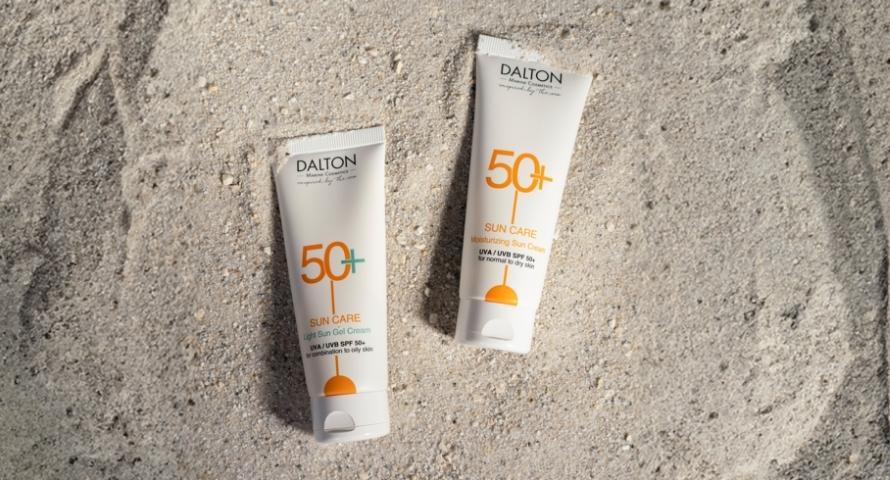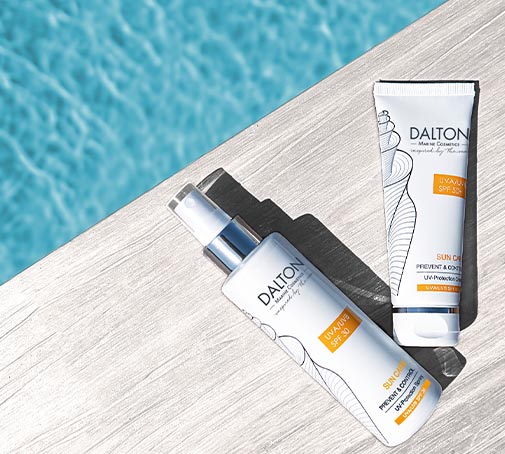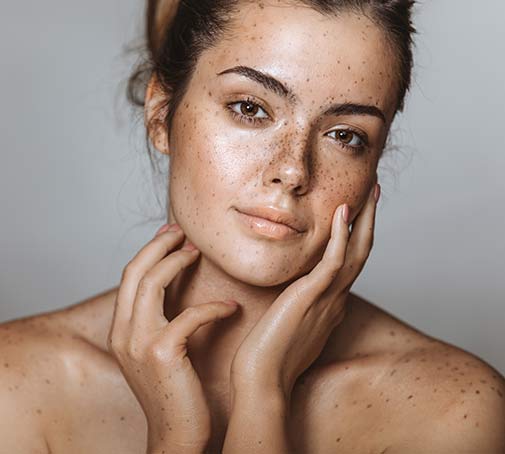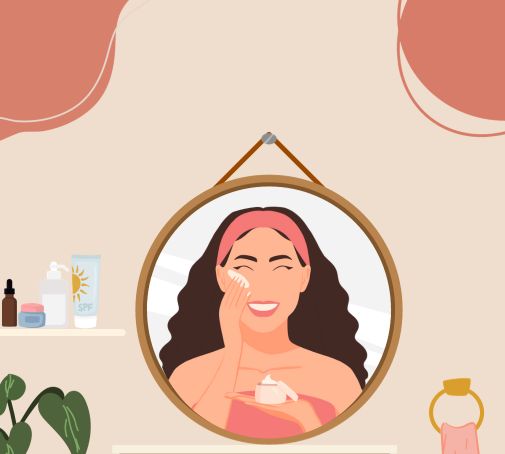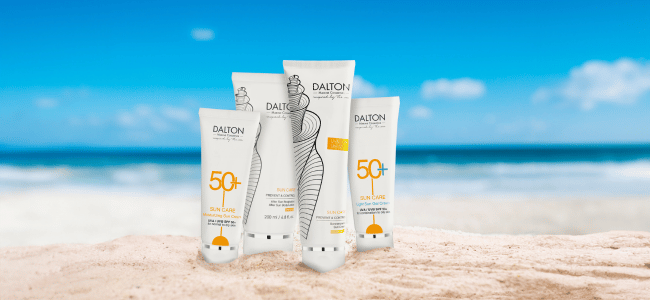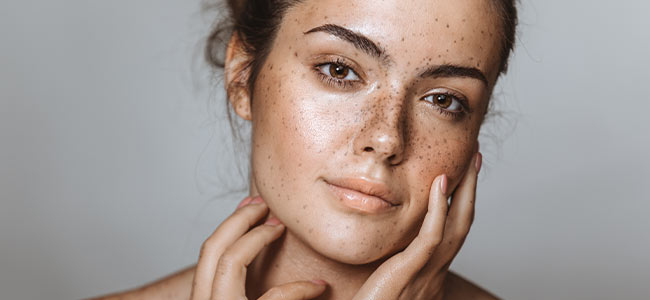

SPF - Sun Protection Factor
Everybody knows that sun protection is really important – to prevent skin cancer, sunburn and premature aging. But which product is best for you and what does the SPF number on sunscreens actually mean? Let’s take a closer look!
What is SPF and what does it mean?
SPF 50, 30 or is 20 enough? What do the SPF values on a product actually mean? SPF stands for Sun Protection Factor and it refers to the amount of time a product can protect you from the sun’s UVB rays (but not UVA rays). However, this amount of time varies for different people even when using the same SPF, because it is relative to the time it would take your skin to burn without any sunscreen on. (which can range anywhere from 5 minutes to 1.5 hours). That is why there is no one SPF that is the best for everyone. It must be tailored to you and your specific skin needs.
How to find the best SPF for your skin type
Which sunscreen should you use? That depends on your skin type and how long you intend to stay in the sun. Generally, there are six different categories of skin types:




Sensitive skin that burns quickly
Skin type I
- Very pale skin (sometimes freckles), blue eyes and red or light blonde hair
- Never tans
- Extremely prone to sunburns
- Maximum sun exposure before burning: 10 minutes
Recommended SPF: 30-50+
Skin type II
- Fair-skinned, light eye color (blue, green, gray) and blonde hair
- Tans slowly
- Burns quickly
- Maximum sun exposure before burning: 20 minutes
Recommended SPF: 20-50
Skin type III
- Beige skin, gray or brown eyes and dark blonde hair
- Tans slowly
- Burns on occasion
- Maximum sun exposure before burning: 30 minutes
Recommended SPF: 15-30
Skin types with lower UV sensitivity
Skin type IV
- Olive or light brown skin, dark eyes and hair
- Tans quickly
- Rarely burns
- Maximum sun exposure before burning: 40 minutes
Recommended protection: SPF 10-15
Skin type V
- Dark brown skin, dark eyes and black hair
- Rarely burns
- Maximum sun exposure before burning: 60 minutes
Recommended protection: SPF 4-8
Skin type VI
- Very dark brown skin, dark eyes and black hair
- Very rarely burns
- Maximum sun exposure before burning: 90 minutes
Recommended protection: SPF 4-8
Calculate your sun protection factor
SPf 50? Or is a 30 SPF sunscreen enough?
From now on, you can easily answer this question yourself:
|
Sun exposure time in minutes: Minutes to burn without sunscreen = SPF |
Of course, the equation can also be easily reversed. If you want to know how long your sunscreen can protect you from UVB rays, you can use the following calculation:
|
Minutes to burn without sunscreen x SPF = Sun exposure time in minutes |
For example: 10 minuten x SPF 30 = 300 minutes
Caution! You are not completely safe during this time, as no sunscreen can block 100% of the sun’s UVB rays! The UV protection becomes weaker when you sweat, swim or use a towel to wipe your skin. Dermatologists recommend to reapply sunscreen at least every two hours.
Even when you reapply frequently, it does not automatically extend the UVB protection or the time you can spend in the sun. Make sure you avoid the midday sun and give your skin regular breaks in the shade or indoors.
How much sunscreen should I use
Many people use far too little product when applying sunscreen. Make sure to be very liberal with the amount of sunscreen you use and don’t miss any areas! Sunscreens that offer both UVB and UVA protection are called ‘broad spectrum’. Both UVB and UVA rays are associated with skin cancer. That is why it is highly recommended to wear generous amounts of a broad spectrum sunscreen for optimal protection from UV light.
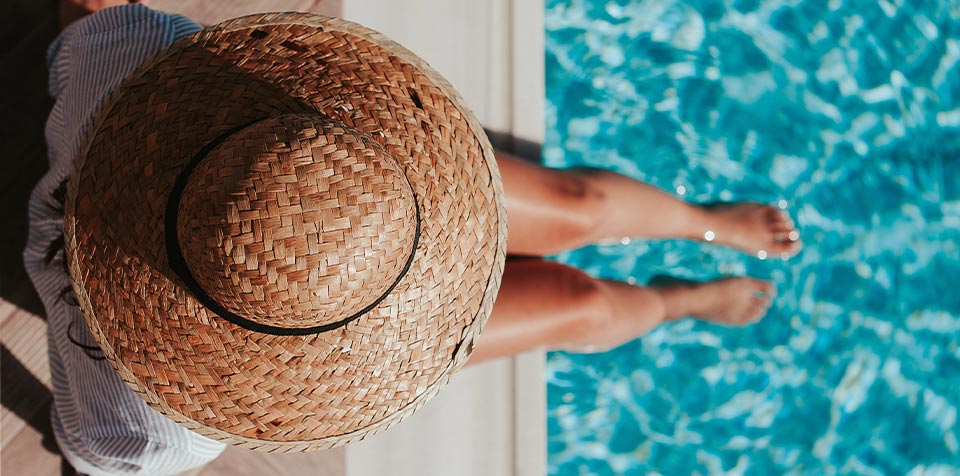



Applying sunscreen products
We recommend a level teaspoon for the face. For the rest of your body, you need about 3 tablespoons per application. And as always: Don’t forget to reapply!
Tip: Put sun lotion under your make-up, too.
Likewise, you should wear sunscreen under your clothing. It is a mistake to believe that a simple T-shirt can block UV rays. It is advisable to wear long-sleeved shirts, wide-brimmed hats, tightly woven garments or several layers of clothing on top of each other, if UV radiation is particularly high.
How to find the best sun cream
Moisturizing skincare and sun protection don’t have to be mutually exclusive. Therefore, when picking a sunscreen product, don’t just look at the SPF. Our SUN CARE products are formulated with a unique combination of intelligent UVA and UVB filters as well as moisturizing and nourishing ingredients.
The Light Sun Gel Cream UVA/UVB SPF 50+ is the ideal choice for oily or combination skin—its lightweight, non-greasy texture feels comfortable and never heavy. Dry skin, on the other hand, benefits from the Moisturizing Sun Cream UVA/UVB SPF 50+, which also offers high UVA and UVB protection without leaving a shiny or white residue.
By the way, your face should be protected all year round. For daily use, we recommend the Daily Ultralight Sun Fluid - its ultra-light texture works perfectly under makeup and can be applied over your regular moisturizer. It’s fragrance-free and suitable for sensitive skin.
For the body, the Body Sun Protection Lotion is an excellent option. It provides reliable UVA and UVB protection while hydrating the skin and delivering antioxidant care.
SIMILAR POSTS
You Might Also Like

